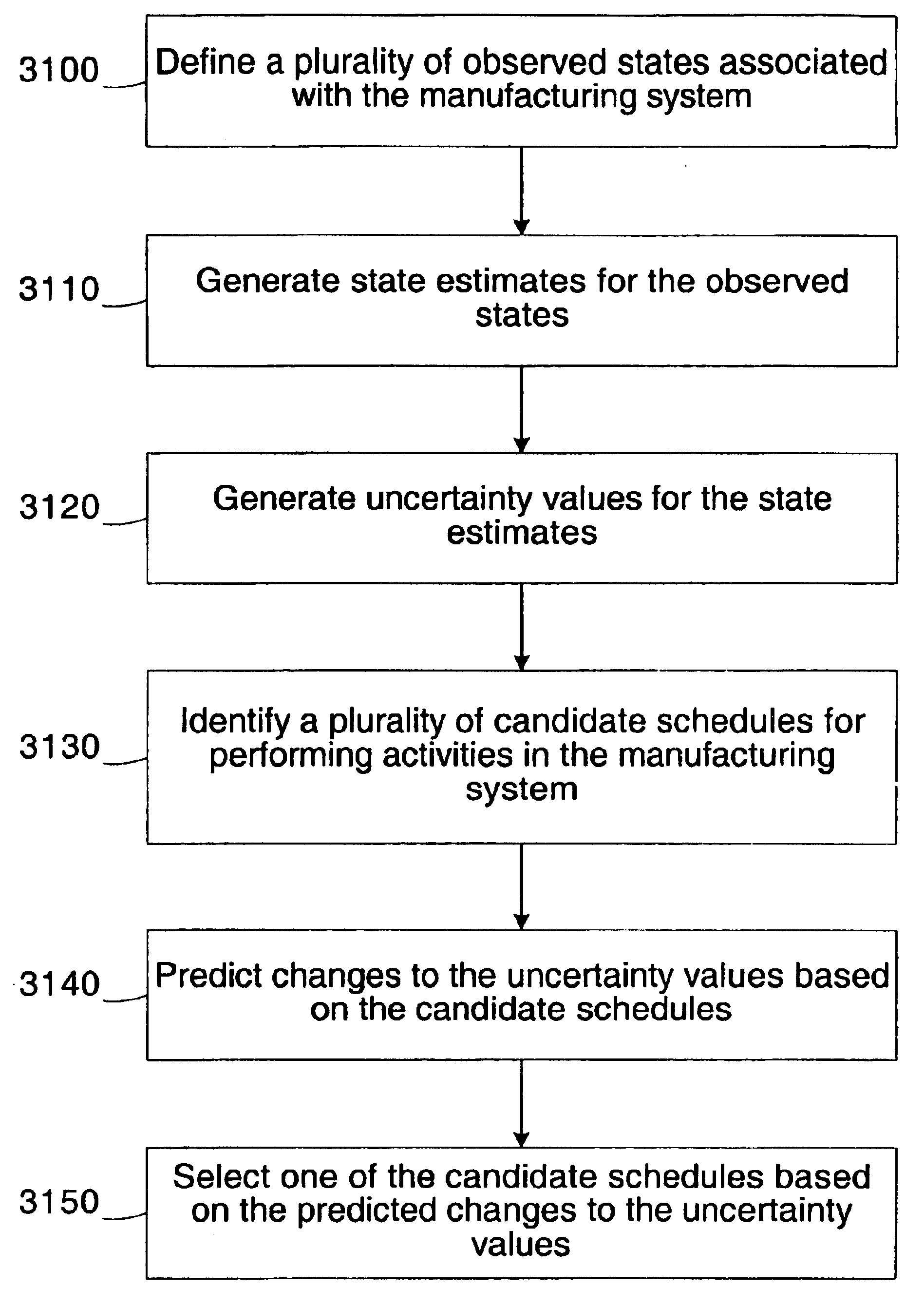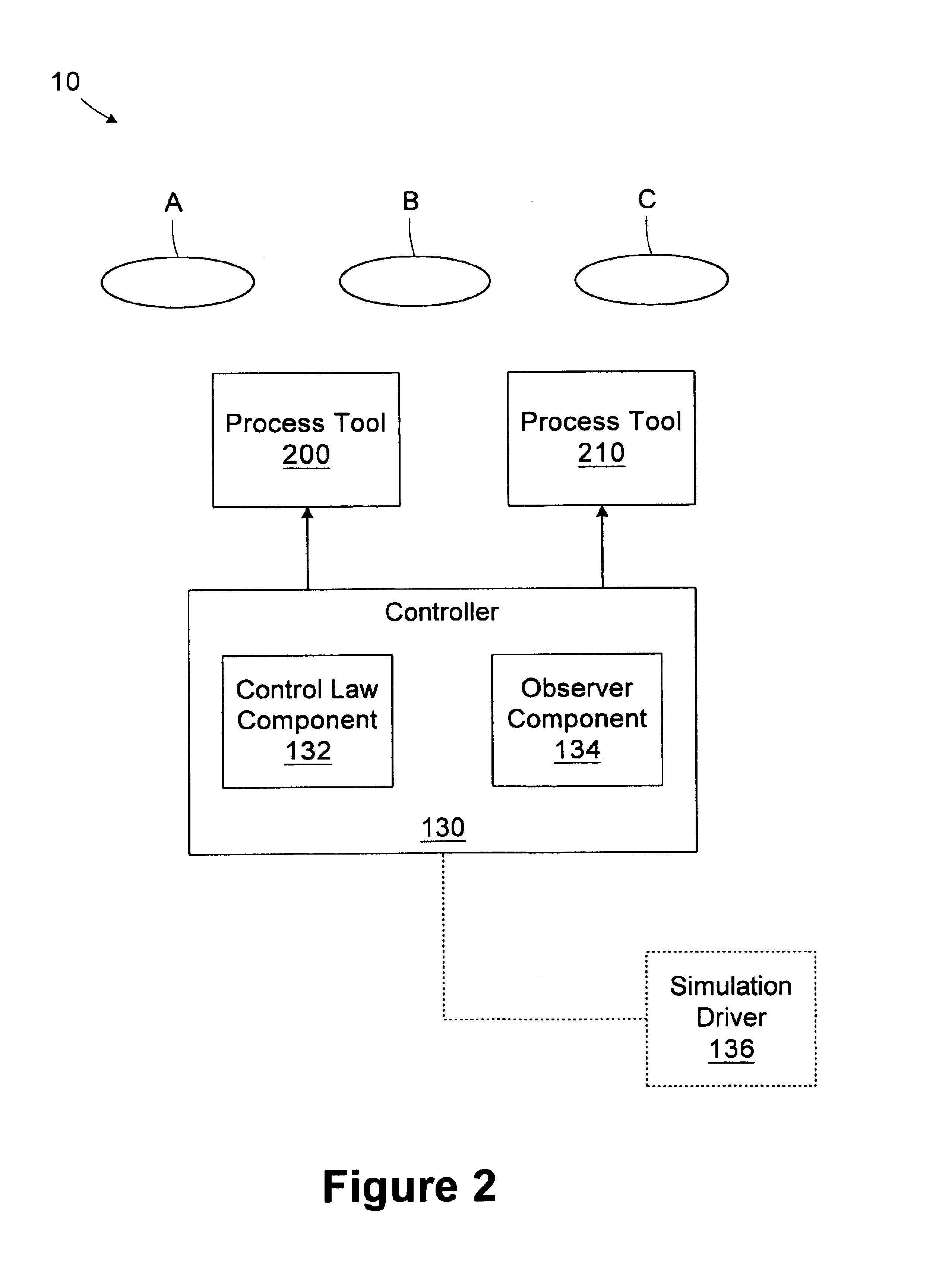Because of the nature of the
process conditions and the high cost of materials, it is very difficult and often impossible to obtain measurements of key process variables while the process is operating.
This task is made more difficult by the fact that measurements are often confounded by several different possible sources of variation.
The manufacture of
semiconductor devices is characterized by expensive equipment and raw materials being used to create microscopic features in a
batch processing environment.
These conditions ultimately mean that it is difficult (and in many cases impossible) to measure important quality variables in situ.
Unfortunately, it is typically not possible to go back and perform an operation again to correct a misprocessed batch.
As a result, aggressive control laws must be chosen because the manufacturing constraints do not allow a series of off-target batches while the controller approaches the target.
When the
system model is able to make accurate predictions, the controller can be quite aggressive.
A controller that is too aggressive in the presence of model error and other uncertainties can actually exhibit poor performance and may lead to
instability.
On the other hand, larger, more dramatic changes can upset the process by introducing dynamics more quickly than the process can
handle.
In many practical applications, it is not feasible to obtain an exact model form for the process under study.
However, real processes and the disturbances to them change over time, so it is not necessarily true that all process variables of interest will remain stationary.
In addition, there are many systems where all of the measurements important to control cannot be taken as frequently as desired.
In this context, static limits on process variables do not always make sense.
This is because the true model of the system is often either unknown or too complicated for the optimal controller to have a closed
form solution.
The main limitation of an offline
system identification scheme is that it cannot predict how the model may change in the future.
Identification of a process under
automatic control is complicated because the actions of the controller
mask the underlying behavior of the process.
Run-to-run batch control in semiconductor manufacturing is often complicated by having multiple products and multiple processing tools.
These situations arise very often in semiconductor manufacturing, but they are also an issue in other
batch processing environments, such as the production of polymers.
It is important that each batch meet its required specifications, but it is difficult to choose appropriate
recipe settings when switching between different products and tools.
However, the rate can drift from batch to batch, even if only one product is being made.
This can be caused by reactor
fouling, degradation of consumable materials, or process leaks.
Simply tracking an estimate for r from run to run is not acceptable because each switch to a different product appears as a step change.
Reactor
fouling causes the rate to continually decay over the course of the runs.
However, in a real manufacturing environment, several complications arise.
For example, there can be several processing tools, new products appear, and experiments can be very expensive in terms of both raw materials and processing tool
downtime.
The
impact here is that the product specific factors are not always known a priori, so it is not necessarily safe to assume k.sub.p (and hence C) are known values.
This technique, while simple to understand, is limited because it is a rule-based scheme that relies on concepts that are difficult to quantify.
Furthermore, it is not always possible to solve the model equations for each parameter in turn.
It is easier to learn about the process by making large input changes or running non-production experiments, but this directly opposes the primary goal of the controller.
Run-to-run control as practiced in high-volume multi-product semiconductor manufacturing does not easily fit into the framework of traditional approaches to
process control.
One reason this approach is not always successful is that there are often multiple processing tools as well as multiple products.
It is a common practice in today's
microelectronics manufacturing facilities to have many different products and processes run on each processing tool, mainly because of the high capital costs associated with the tools and the
limited capacity of the facility.
Determining how to do controller updates in this environment can be a challenging task.
When the various processes run on the tool are significantly different, the controller may behave unexpectedly because a change to a new process can appear to be a large disturbance.
In addition, it may take several successive runs of a given process for the controller to stabilize, but manufacturing constraints may prevent this from happening.
One very difficult task in this situation is determining which of the many possibilities (parameters, bias estimates) is the source of the observed errors in the output.
 Login to View More
Login to View More  Login to View More
Login to View More 


